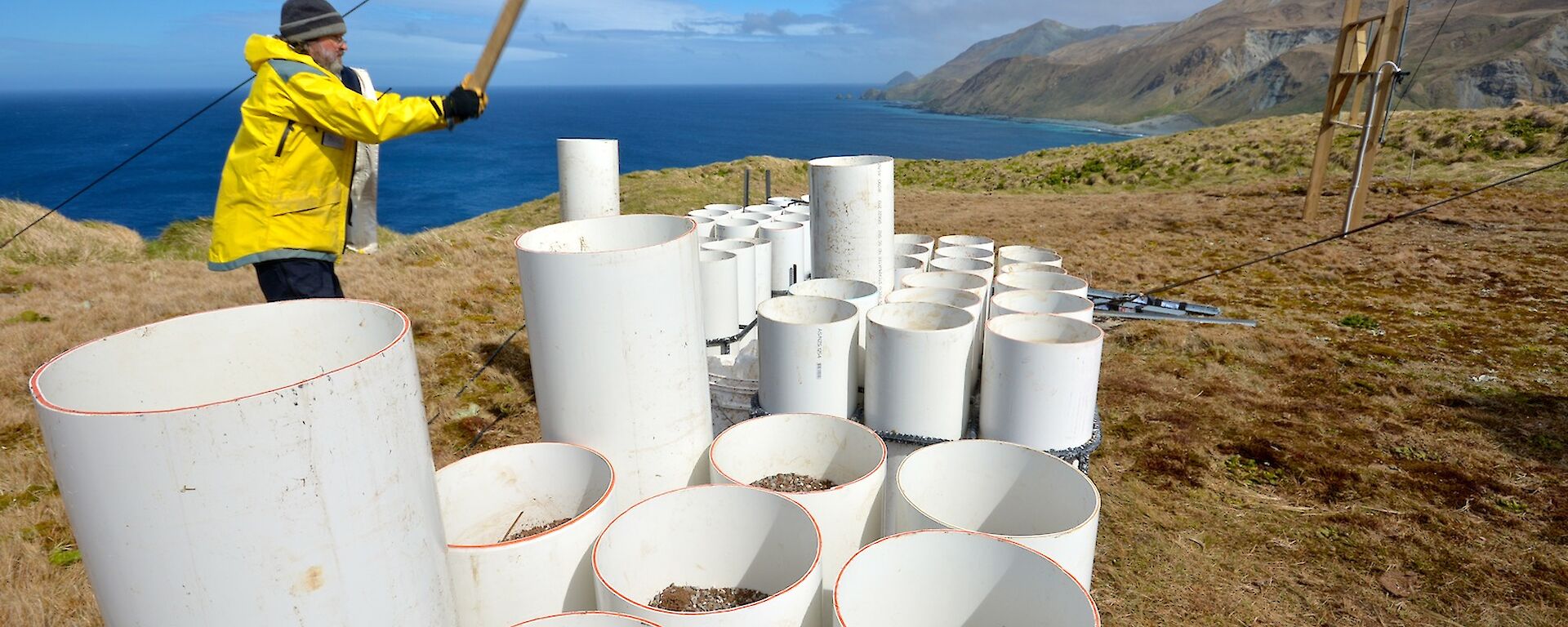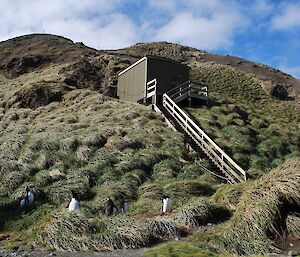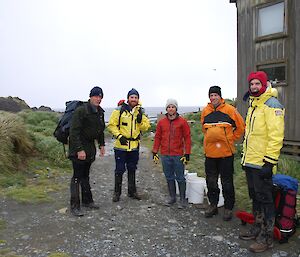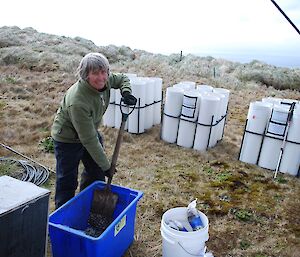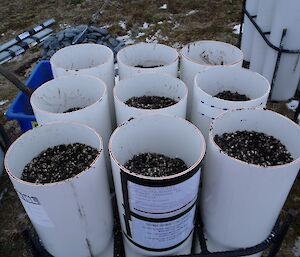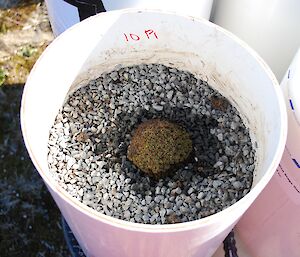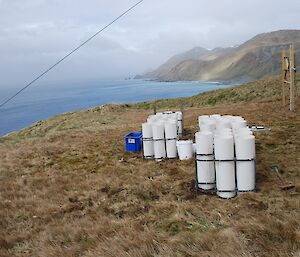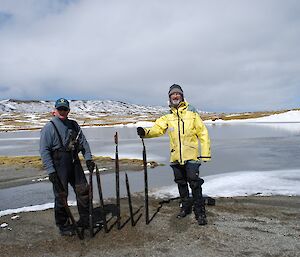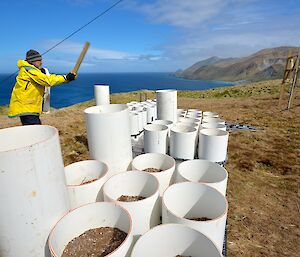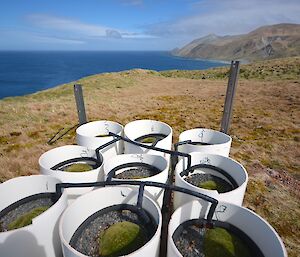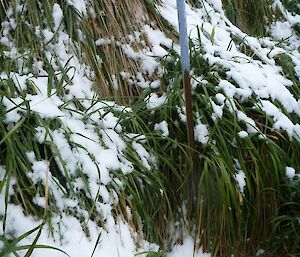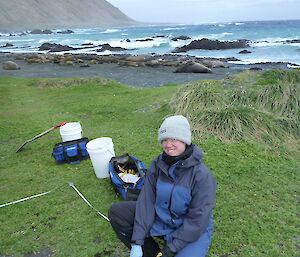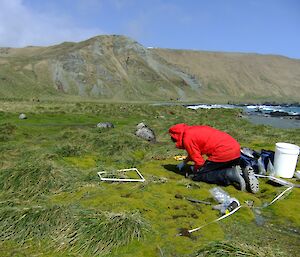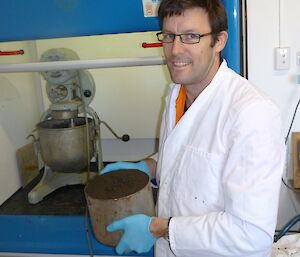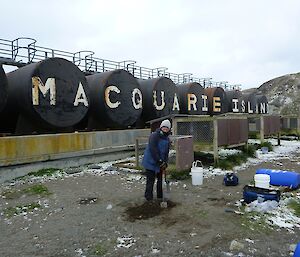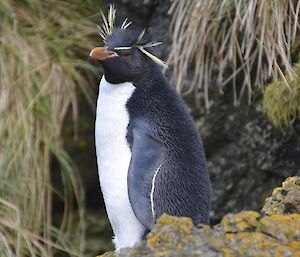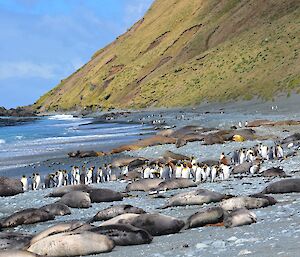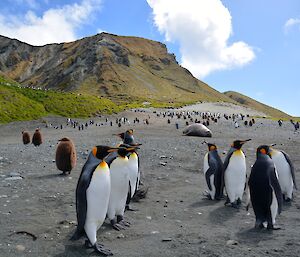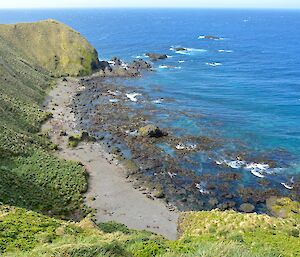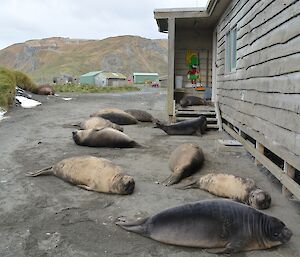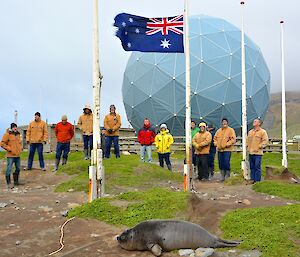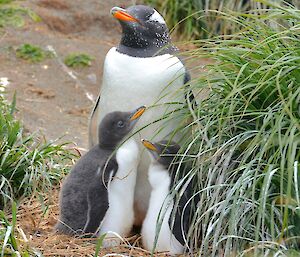Royal Tasmanian Botanical Gardens (RTBG) botanist, Natalie Tapson, has been working since arriving at the end of October to increase the existing Azorella seed orchard from 9 to 54 plants. Azorella macquariensis is a cushion plant that only grows on Macquarie Island and is the major structural component of the feldmark vegetation that occurs on the windswept plateau at altitudes between 200 and 400 metres.
The species has undergone a catastrophic decline right across the island since late 2008 and as yet no definitive cause has been found for the dieback. As a result of the decline, the species is now listed at the highest level of threat under both the federal and Tasmanian threatened species acts.
A trial seed orchard established by the RTBG on Wireless Hill in 2010 was successful so it was decided to seek funding to increase the orchard to at least 50 plants to capture the genetic variability within the species. The seed will be collected for long-term storage in the RTBG seed bank and research will be undertaken to work out the germination requirements. Funding from the Mohamed bin Zayed Species Conservation Fund and the Foundation for National Parks and Wildlife have allowed the project to go ahead.
Wireless Hill is on North Head, up a steep track, in close proximity to the station. Most of the equipment for the orchard was thankfully dropped by helicopter at the site during resupply in March 2013 but some of the ingredients for the mix had to carried from the station up the hill. After a plea for help by Natalie, there was quickly a band of willing volunteers to carry backpacks full of peat and pebbles up the hill.
Much of the peat had already been autoclaved by Angela from the pest eradication (MIPEP) team in the week before L’Astrolabe arrived. With pebbles in the base for drainage and a mix of peat, perlite and gravel, most of the tubes have been filled and so far three plants have been collected from the south of the island by Peter from the MIPEP team. These have been planted as the first new additions to the seed orchard. A new tank is being installed by Josh and over the next few weeks Natalie will work with Ranger in Charge, Chris Howard, to collect more plants from across the island to add a total of 45 new plants to the seed orchard.
Natalie Tapson

